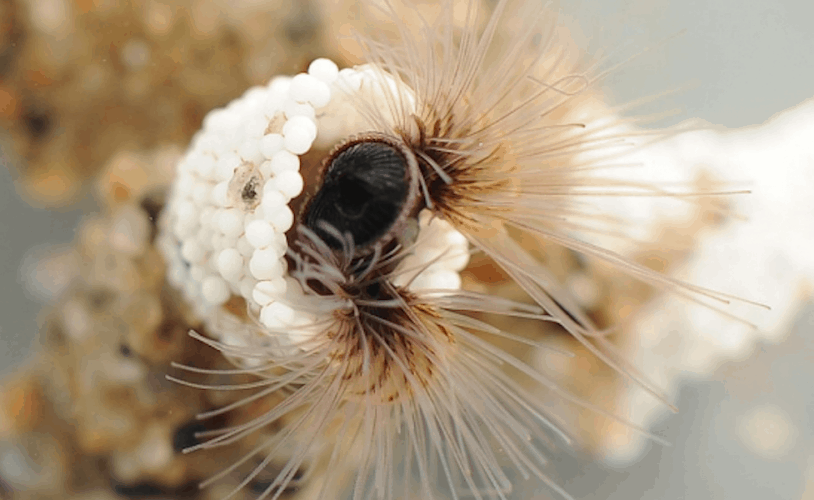
Areas such as tissue repair, dental adhesives and other surface adhesion applications could benefit from this glue, which replicates the adhesion strategy of the segmented marine invertebrate that is found along the California coast.
Known for constructing hive-like shelters out of grains of sand glued together by a protein adhesive, sandcastle worms, along with mussels and other glue-secreting inhabitants of the intertidal zone, have inspired scientists and engineers looking to develop an adhesive that can perform in wet, submerged and otherwise inhospitable conditions.
"Sandcastle worms secrete a robust underwater adhesive to build a tube reef (sandcastle) in harsh intertidal environments, where wind and wave velocity often exceed 25 meters per second," said Kollbe Ahn, a project scientist at UCSB's Marine Science Institute and co-lead author of a paper on this research that appears in Nature Materials. "We successfully replicated the strong wet-contact adhesion of the bio-adhesion featuring nanoscopic chemical and miroscopic porous structures.”
While wet glues have been the subject of research and development for many years, they have yet to approach the performance of the natural substances in terms of stickiness and adhesion. Synthetic underwater adhesives have typically required complex processing and functionalization, adding further steps to what would ideally be a simple process.
"From practical perspectives, simple processing saves time and labour, and ultimately reduces costs," said Qiang Zhao, UCSB materials scientist and lead author. The sandcastle worm-inspired glue is particularly noteworthy, he said, because through a phenomenon called solvent exchange, adhesion becomes a more streamlined.
"The processing of this wet glue does not need pre-immersive dry curing or applied compressing pressure that are normally required in conventional studies," Zhao said. The synthetic glue also promotes adhesion between a variety of surfaces, including plastics, glasses, metals, wood and biological tissues.
Additionally, the resulting microarchitecture of the synthetic glue, which mimics the porous structure of sandcastle worm adhesive, is said to make it more resistant to cracking.
"Porous structures, or cellular structures, are ubiquitous in nature, such as in cork, bones and coral, and they are found to increase fracture energy of these materials," Zhao said. "Here in the context of wet adhesion, we found that the porosity was reminiscent of the porous structures of sandcastle worm cement, and significantly improved wet adhesion."
According to UCSB, this development is the latest effort at the university to formulate an adhesive that performs in wet and especially adverse conditions, and could lead to a variety of applications, such as dental adhesion and the repair of tissue, skin, bones and membranes that are surrounded by bodily fluids.
Additionally, industrial and commercial applications that require adhesion in wet environments could also benefit from this technology. Through studies of mussels and sandcastle worms, the researchers hope to create and optimise an adhesive that not only bonds quickly and performs well under a variety of conditions and with various surfaces, but also eliminates the need for organic solvents, which results in a more environmentally friendly adhesion process.




Poll: Should the UK’s railways be renationalised?
I think that a network inclusive of the vehicles on it would make sense. However it remains to be seen if there is any plan for it to be for the...